Original Jeet Kune Do Seminars Vol 8 – Don Chi Sao & Seong Chi Sao By Lamar Davis
$20,00 $8,00
Review of Original Jeet Kune Do Seminars Vol 8: Don Chi Sao & Seong Chi Sao by Lamar Davis – Digital Download!
Let’s embark on a captivating adventure to uncover remarkable insights that spark your curiosity and elevate your understanding

Original Jeet Kune Do Seminars Vol 8 – Don Chi Sao & Seong Chi Sao By Lamar Davis
Overview
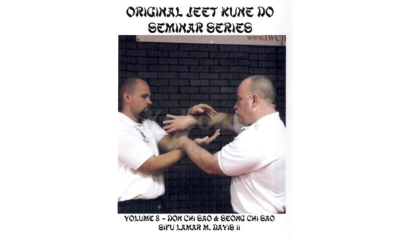
Review of Original Jeet Kune Do Seminars Vol 8: Don Chi Sao & Seong Chi Sao by Lamar Davis
In the world of martial arts, the concept of sensitivity and seamless interaction during combat is not just a technique; it’s an art form. This essence is intricately captured in the Original Jeet Kune Do Seminars Volume 8, where Sifu Lamar M. Davis II unravels the subtleties of “don chi sao” (single sticky hands) and “seong chi sao” (double sticky hands). With this comprehensive instructional video, practitioners of all levels are offered a unique glimpse into the foundational methods that underscore Bruce Lee’s martial philosophy. From essential training routines to practical applications, this volume serves as a bridge connecting the rich tradition of Jeet Kune Do with modern-day self-defense strategies.
Understanding the Core Concepts: Don Chi Sao and Seong Chi Sao
The Essence of Don Chi Sao
The term “don chi sao” translates to single sticky hands, a practice that focuses on developing reflexes and enhancing a martial artist’s sensitivity during combat. In this segment of the seminar, Sifu Davis meticulously breaks down the mechanics involved in executing don chi sao techniques, emphasizing their significance in real-life self-defense scenarios.
Practitioners will learn how to engage with their opponent not just through physical strength, but through an innate sensitivity that allows them to feel and anticipate movements. This technique is akin to a dance; each participant must be attuned to the other’s rhythm, adjusting and flowing as necessary. The beauty of don chi sao lies in its ability to transform a chaotic confrontation into a harmonious exchange of energy, enabling a practitioner to remain one step ahead of their opponent.
The Complexity of Seong Chi Sao
On the other hand, seong chi sao, or double sticky hands, expands this concept into a duet of movements, requiring not just individual skill but coordinated dynamics between partners. Sifu Davis illuminates how, through this exercise, martial artists are challenged to respond not just to their own actions but to the simultaneous movements of their partner. This could be likened to a conversation where both parties must listen and react, leading to a dialogue that is as much about strategy and timing as it is about skill.
In the context of Jeet Kune Do, mastering seong chi sao paves the way for more intricate self-defense techniques. Comparatively, while don chi sao might be seen as an initial listen, seong chi sao cultivates a richer understanding of the interplay of force, tension, and response turning practitioners into conversationalists of combat.
The Importance of Sensitivity Training
Bridging Intuition and Technique
Sensitivity training, a central theme throughout the seminars, is the backbone of chi sao practice. It fosters an intuitive response to the opponent’s actions, transforming the practitioner from a reactive fighter into a proactive strategist. Sifu Davis passionately advocates for the development of this skill set, asserting that it creates an environment where response becomes second nature, allowing martial artists to adapt seamlessly to their opponent’s strategies.
Incorporating this training into one’s practice can be likened to learning a new language; it requires time, patience, and consistency. The nuances of sensitivity echo through the practices discussed, underlining that true mastery comes not just from physical engagement but from cultivating an inner awareness that anticipates movements before they happen.
Practical Applications in Self-Defense
Beyond the philosophical underpinnings, the practical applications of don chi sao and seong chi sao are readily transparent in the instructional material. This video offers vivid demonstrations that illuminate how these techniques translate to effective self-defense strategies. Sifu Davis instructs viewers on how to transition from sensitivity training into real-life scenarios, where reflexes and timing are not just beneficial, but vital for safety.
For instance, when a potential attacker throws a punch, a practitioner equipped with don chi sao training can respond by deflecting and countering smoothly, rather than relying on brute strength. This relationship between sensitivity and self-defense mirrors the art of sailing; one must read the winds and adjust accordingly, navigating through challenges with finesse and agility.
Visual Learning and Demonstrations
Clear Demonstrations for All Levels
One of the standout features of this seminar is its commitment to clear, demonstrative instruction. Sifu Davis ensures that each concept, whether complex or nuanced, is accessible to both novices and seasoned practitioners. This clarity serves as a beacon, guiding learners through intricate techniques without overwhelming them.
In practical terms, the instructional video showcases side-by-side comparisons of techniques, allowing viewers to witness variations in movement and execution. This bifurcation not only aids in understanding but highlights differences in application, enabling students to analyze what works best in various scenarios.
Engagement with the Material
The structural format of the seminar enhances engagement with the material. By breaking down each segment into digestible parts, learners can focus on specific techniques before moving on to more advanced applications. This approach can be likened to building a house laying a strong foundation before adding layers of complexity ensures durability and resilience in practice.
List of Techniques Covered
- Don Chi Sao Techniques:
- Basic movement principles
- Reflex enhancement exercises
- Application in self-defense
- Seong Chi Sao Techniques:
- Partner dynamics
- Timing and coordination drills
- Practical engagement scenarios
- Sensitivity Training Applications:
- Anticipatory movements
- Transitioning from training to real-world application
- Enhancing overall martial capability
The Value of Mastering Chi Sao Techniques
Transformative Experience
Studying and mastering the techniques presented in this seminar transcends mere physical skill it becomes a transformative experience. Sifu Davis invites practitioners into a realm where they cultivate not just martial skill, but also mental sharpness and emotional intelligence. The journey through don chi sao and seong chi sao is also one of self-discovery, where students learn to harness personal strengths while acknowledging areas for improvement.
Through practical exercises, martial artists often report an increase in self-awareness, not only in their fighting capabilities but in their daily interactions. This alignment mirrors the philosophy that Bruce Lee imparted: that martial arts is not simply about combat but a means of expressing oneself and connecting with those around us.
Broader Implications for Personal Growth
Furthermore, the principles learned through these techniques have implications that reach far beyond the dojo. The sensitivity and responsiveness nurtured through chi sao training can enhance other life skills, such as conflict resolution, strategic planning, and effective communication.
As practitioners refine their ability to anticipate and respond, they cultivate an attitude of patience and understanding. The correlations between martial arts and personal growth speak to the holistic nature of Jeet Kune Do, reinforcing its position not merely as a fighting style, but as a comprehensive life discipline.
Conclusion
In summary, the Original Jeet Kune Do Seminars Volume 8 featuring Sifu Lamar M. Davis II provides an invaluable resource for anyone seeking to deepen their understanding of chi sao and its pivotal role within Jeet Kune Do. Through clear demonstrations, practical applications, and a focus on sensitivity training, this seminar bridges the gap between martial arts techniques and genuine self-defense strategies. It empowers practitioners to move beyond mere mechanical fighting and embrace a more fluid, intuitive form of martial expression, embodying the very spirit of Bruce Lee’s philosophy. Whether you are a novice eager to learn or an experienced martial artist looking to refine your skills, the concepts covered in this volume are essential to mastering the art of Jeet Kune Do and, ultimately, yourself.
Frequently Asked Questions:
Innovation in Business Models: We use a group purchase approach that enables users to split expenses and get discounted access to well-liked courses. Despite worries regarding distribution strategies from content creators, this strategy helps people with low incomes.
Legal Aspects to Take into Account: Our operations’ legality entails several intricate considerations. There are no explicit resale restrictions mentioned at the time of purchase, even though we do not have the course developers’ express consent to redistribute their content. This uncertainty gives us the chance to offer reasonably priced instructional materials.
Quality Control: We make certain that every course resource we buy is the exact same as what the authors themselves provide. It’s crucial to realize, nevertheless, that we are not authorized suppliers. Therefore, the following are not included in our offerings: – Live coaching sessions or calls with the course author.
– Entry to groups or portals that are only available to authors.
– Participation in closed forums.
– Straightforward email assistance from the writer or their group.
Our goal is to lower the barrier to education by providing these courses on our own, without the official channels’ premium services. We value your comprehension of our distinct methodology.
Be the first to review “Original Jeet Kune Do Seminars Vol 8 – Don Chi Sao & Seong Chi Sao By Lamar Davis” Cancel reply
You must be logged in to post a review.
Related products
Martial Arts
The Iron Fortress Become an Impenetrable Force – Virtually Overnight By Russell Stutely

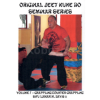



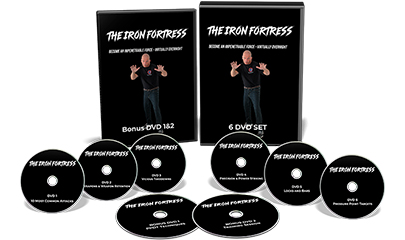




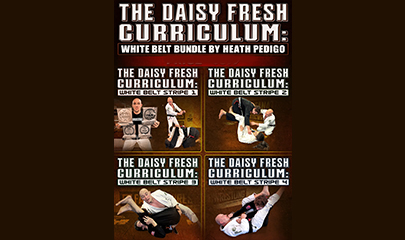

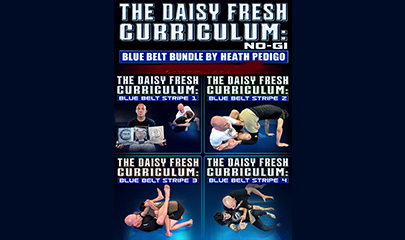
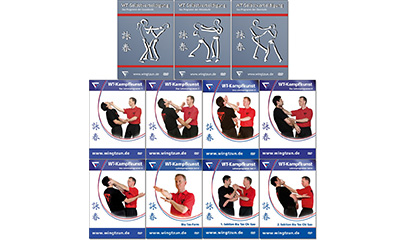




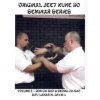
Reviews
There are no reviews yet.